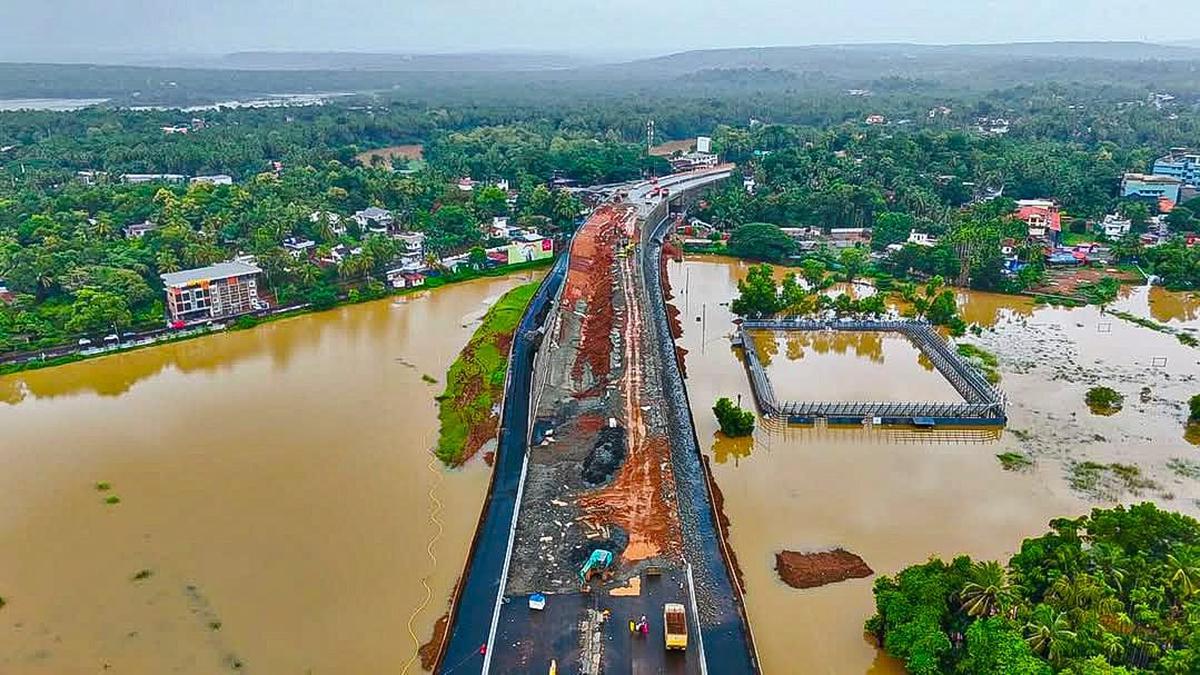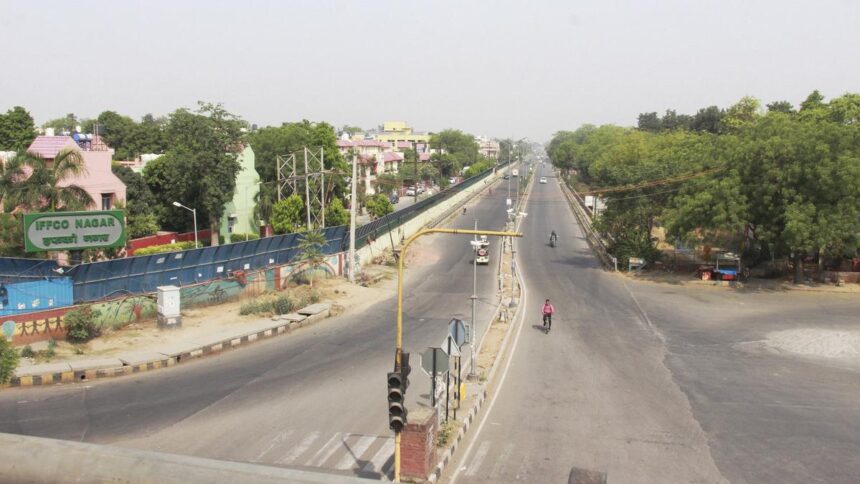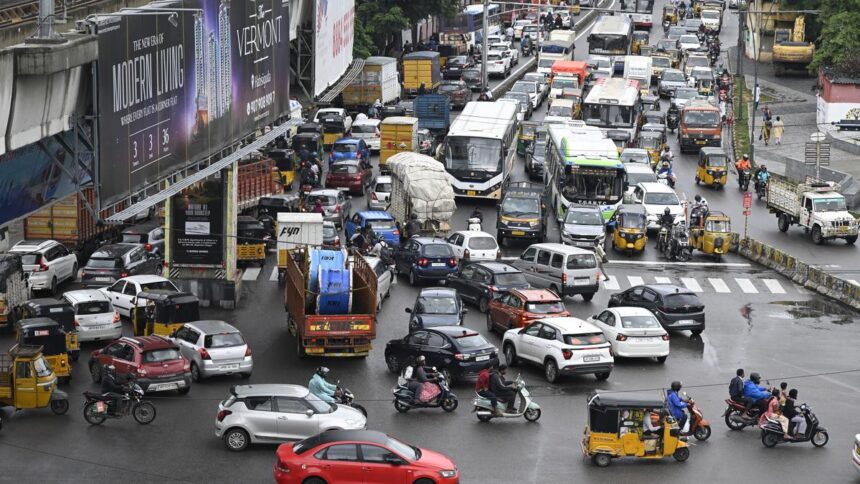
An aerial view of the collapsed stretch of National Highway 66 when rainwater flooded both sides at Kooriyad in May 2025.
| Photo Credit: SAKEER HUSSAIN
Most of the construction packages of national highway (NH) 66 in Kerala, which have either collapsed or developed cracks, were built in violation of the Ministry of Road Transport and Highways (MoRTH) specifications, says an expert study.
Though the “inspection report on slope stability, protection measures for slopes, embankments, and other vulnerable locations on NH 66”, commissioned by the National Highways Authority of India (NHAI), following the incidents has not fixed the responsibility on any agency, it has exposed serious lapses in the road construction.
While the NH collapsed at Kooriyad, Malappuram, the sidewalls of the road structure caved in some parts of Kannur and a service road sank in Kasaragod. The road stretch had also developed cracks in some other parts of the State, leading to widespread public outrage.
The committee, which had Kishor Kumar, former chief scientist of Central Road Research Institute, New Delhi, K. Aravind, director, Geological Survey of India, State unit (Tamil Nadu and Puducherry), T. K. Sudheesh, Associate Professor and Head, Department of Civil Engineering, IIT Palakkad and P.S. Prasad, chief scientist, Geotechnical Engineering Division, Central Road Research Institute, New Delhi, as its members, submitted its report earlier this week.
Caution against potential landslides
The panel has also sounded caution about the potential landslides and the resultant widespread structural damage and traffic disruptions in several reaches of the NH 66, while prescribing mitigation measures to the critical road stretches to “safeguard against future instability.”
Investigations revealed that none of the packages for construction followed the methodology or construction sequence of the slope stabilisation with soil nailing (a technique used to reinforce and stabilise slopes) as per the MoRTH specifications.
The “improper methodology/construction sequence followed for the slope cutting and the soil nailing method” led to the failing of slopes along the NH. “In many locations, the soil layers and their properties are not considered in the design. The groundwater table was not considered in the design of soil nailing,” the report pointed out.
It strongly recommended that “comprehensive geotechnical investigations, site-specific geological mapping, slope stability analyses, and foundation engineering studies be carried out before implementing any design changes, remedial measures, or slope protection works.” Such assessments are “particularly crucial in geologically sensitive and failure-prone areas such as high vertical cut slopes, lateritic terrain, weathered rock interfaces, backwater foundations, and zones of inadequate ‘Right of Way’ where generic solutions may not be effective without tailored geotechnical input,” the committee has warned.
Firms blacklisted
The MoRTH had blacklisted the Andhra Pradesh-based construction company KNR Constructions and the consultancy firm Highway Engineering Consultant following the collapse, which had kicked up a series of public protests.

While the Congress-led Opposition in Kerala cried foul and raised the allegation of a tacit understanding between the BJP-CPI(M) regarding the damaged roads, the Chief Minister and the Minister for Public Works, who had highlighted the completion of the road project as the major achievement of the LDF government, adopted a conciliatory stance by stating that the NHAI would carry out the rectification works.
The nearly 600km-long road runs through the urban centres of Kasaragod, Kannur, Kozhikode, Kochi, Alappuzha, Kollam, and Thiruvananthapuram, before entering Tamil Nadu at Karode.
Published – August 07, 2025 03:03 pm IST






















